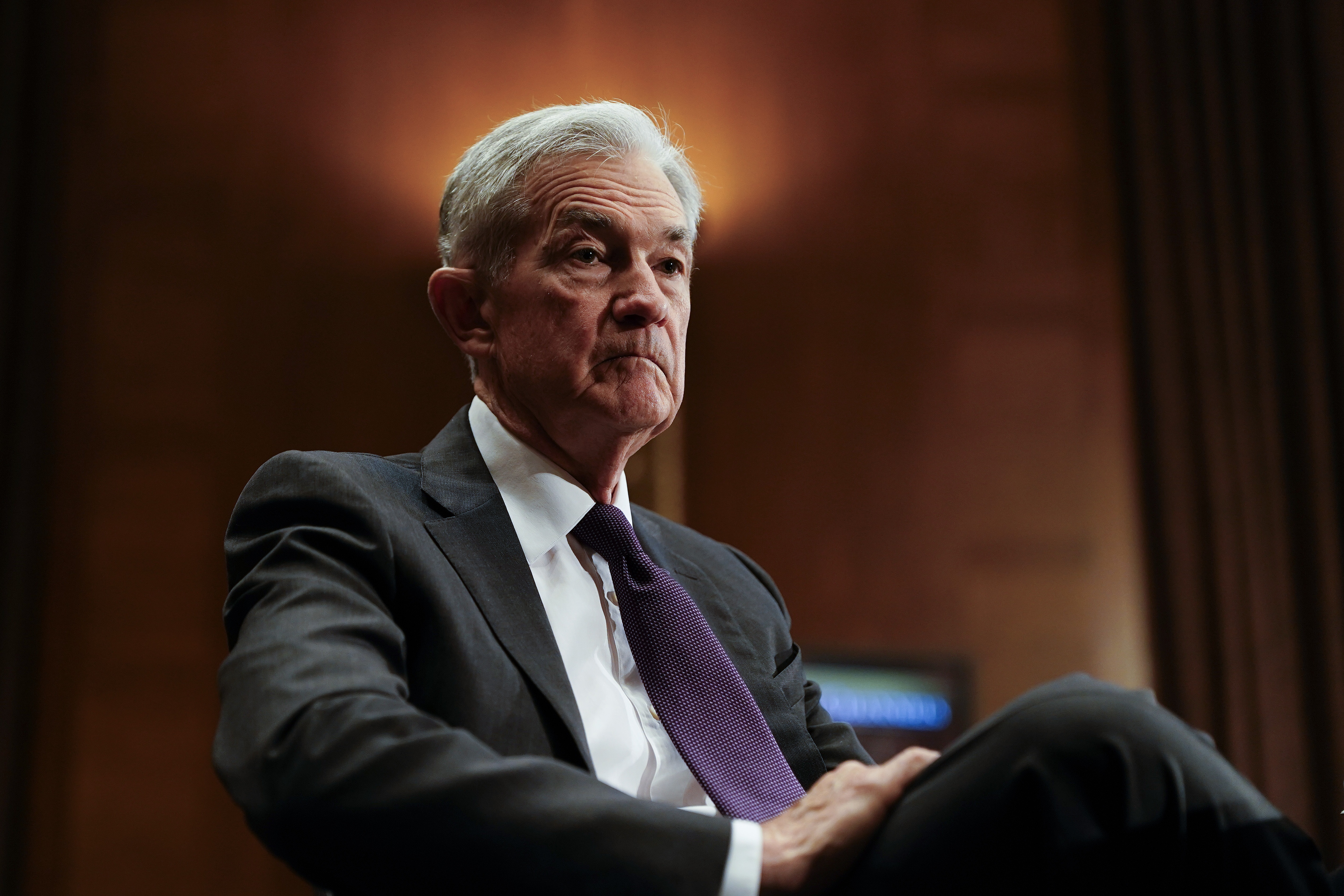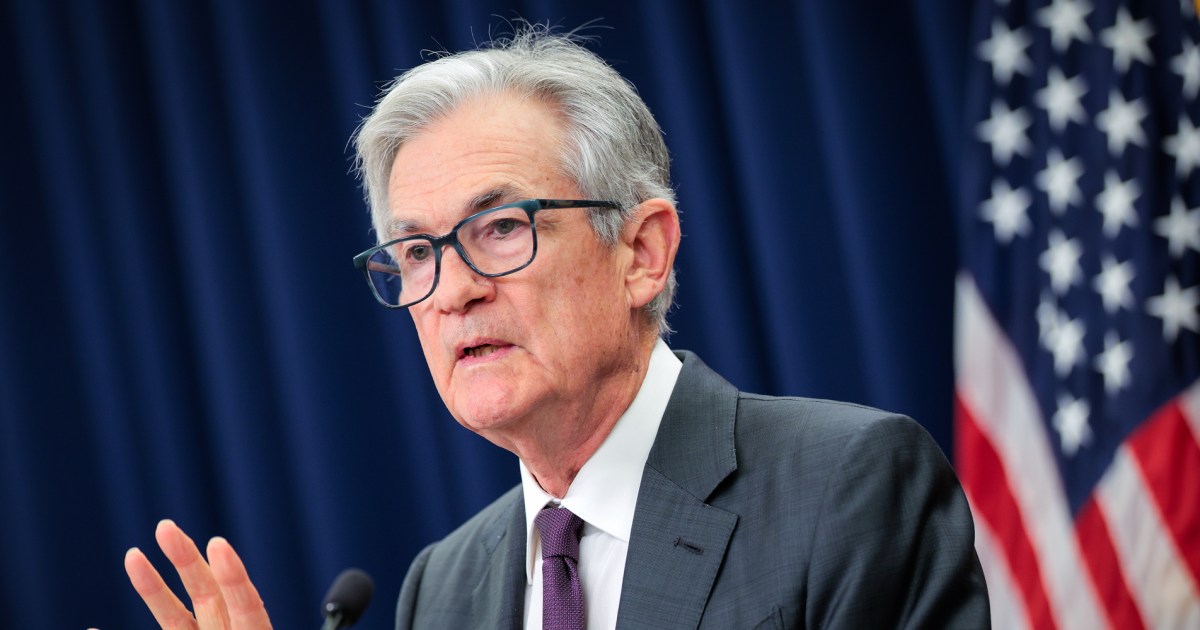
The Federal Reserve has announced its first interest rate cut of the year, lowering the benchmark federal funds rate by a quarter of a percentage point.
The move followed a tense two-day meeting of the Federal Open Market Committee (FOMC) and months of intense public pressure from President Donald Trump, who has repeatedly called for aggressive rate cuts to stimulate economic growth.
The new target range now stands between 4.00% and 4.25%, a shift that reflects the Fed’s cautious response to signals of slowing economic activity, weaker job growth, and persistent inflation.
For Trump and his allies, the cut serves as a vindication of their long-held demand that the central bank act more decisively to ease monetary conditions. For the Fed, it is a balancing act between tempering inflationary pressures and ensuring that labor markets remain resilient.
President Trump has made no secret of his dissatisfaction with Fed Chair Jerome Powell’s handling of monetary policy. For months, he has lambasted Powell in speeches and on social media, urging him to adopt “bigger than he had in mind” rate reductions.
The president’s argument has centered on the idea that cheaper borrowing costs would unleash the full potential of Republican tax reforms, spurring businesses to invest, hire, and grow.
Just days before the FOMC meeting began, Trump once again pressured Powell publicly, saying the central bank needed to act more aggressively to ensure the economy could withstand global uncertainties and domestic slowdowns.
The president framed rate cuts not as a safety measure, but as a necessary catalyst for keeping America’s growth ahead of its global competitors.

The quarter-point reduction ultimately fell short of Trump’s most ambitious demands, but it nonetheless marked a significant shift in the Fed’s posture. It also highlighted the unusual degree to which political pressure has weighed on the central bank’s decision-making in recent months.
In its statement announcing the decision, the Federal Reserve acknowledged mixed signals in the economy. “Recent indicators suggest that growth of economic activity moderated in the first half of the year. Job gains have slowed, and the unemployment rate has edged up but remains low. Inflation has moved up and remains somewhat elevated,” the Fed said.
That phrasing underscores the challenge facing Powell and his colleagues. On one hand, inflation remains higher than the Fed’s traditional 2% target. On the other hand, the labor market, long considered the backbone of America’s post-pandemic expansion, has shown unexpected fragility.
The August jobs report revealed the economy added only 22,000 positions, a figure that stunned analysts who had expected far stronger gains.
Compounding the disappointment, the Bureau of Labor Statistics revised earlier data downward, showing that the economy had produced 911,000 fewer jobs over the past year than previously reported.
Those weaknesses, coupled with modest but persistent inflationary pressures, gave Fed officials the rationale to tilt toward easing. The goal, Powell explained, was to sustain momentum in the labor market and prevent a slowdown from becoming entrenched.
For many small business owners, the rate cut has been welcomed as overdue relief. Alfredo Ortiz, CEO of the Job Creators Network, framed the decision as evidence that Powell was coming around to the president’s perspective.
“American small businesses overwhelmingly want lower interest rates to access the credit they need to take advantage of Republican tax cuts,” Ortiz told the Daily Caller News Foundation.

“Wednesday’s rate cut is a step in the right direction and an admission by Chairman Powell that President Trump’s perspective on interest rates has been correct all along. Tax cuts, rate cuts, and pro-growth Republican policies can fuel a Main Street resurgence that dramatically boosts the labor market and broader economy in the months ahead.”
For entrepreneurs navigating higher borrowing costs in recent years, even a modest reduction could open new opportunities to expand, hire, and invest in growth.
The rate cut came against the backdrop of unusual uncertainty over the very composition of the Federal Reserve’s leadership. Hours before deliberations began, the Senate confirmed Stephen Miran, chairman of the Council of Economic Advisers, to fill the vacancy left by Adriana Kugler, who stepped down in August.
Miran quickly made his presence felt, casting the lone dissenting vote in favor of a half-point reduction rather than the quarter-point cut agreed upon by his colleagues.
His preference for bolder action aligned more closely with Trump’s public demands, signaling that new voices within the Fed may be sympathetic to the administration’s economic agenda.
Meanwhile, an appellate court delivered a separate jolt by ruling that Federal Reserve Governor Lisa Cook could remain in her position while she challenges Trump’s decision to remove her over mortgage fraud allegations.
Cook’s ongoing legal battle has added further uncertainty about the stability and independence of the central bank at a moment when it is under intense political scrutiny.
These developments have fueled concerns that the Fed, traditionally viewed as insulated from partisanship, is becoming increasingly politicized.
Treasury Secretary Scott Bessent has publicly urged a nonpartisan review of the Fed to address perceptions of growing partisanship. He cited shifts in the political leanings of Reserve Bank directors toward Democrats and suggested that restoring confidence in the central bank’s neutrality would be vital for its long-term credibility.
“The Fed plays too important a role in the lives of ordinary Americans to be seen as partisan,” Bessent said, emphasizing the need for bipartisan trust in its policies.
Powell, asked about the proposal during a press conference following the FOMC decision, struck a conciliatory tone. “I am open to constructive criticism,” he said. “We are trying to do better.” However, he did not commit explicitly to supporting a formal review.
The Fed’s decision illustrates the delicate balance it faces. Traditionally, the central bank raises interest rates to cool inflation and prevent overheating. But in this case, the combination of weaker job growth and downward revisions to employment data outweighed inflation concerns, prompting officials to act in the opposite direction.
The consumer price index rose from 2.7% in July to 2.9% in August, a level that would normally argue against easing. Yet Powell and his colleagues concluded that bolstering the labor market was the more urgent priority, even at the risk of allowing inflation to linger above target.
This decision highlights the complexity of navigating an economy where traditional indicators point in conflicting directions. It also reflects the Fed’s effort to reassure the public that it will not ignore signs of stress in the labor market, particularly as voters increasingly judge economic conditions through the lens of job security.
For markets, the rate cut is likely to provide a short-term boost, lowering borrowing costs for businesses and households while signaling that the Fed is willing to respond to weaknesses. For the political world, however, the move will be interpreted through a more partisan lens.
Trump and his allies are already portraying the decision as proof that his pressure campaign worked. Critics, meanwhile, worry that the Fed is compromising its independence by appearing to bow to political demands.

The addition of Stephen Miran, the legal battles involving Lisa Cook, and calls for a review of the Fed’s operations all reinforce the perception that the central bank is in uncharted territory.
The coming months will test whether the Fed’s decision can shore up confidence in the economy. If job growth rebounds and inflation moderates, Powell may claim success in steering a difficult course. But if inflation accelerates or the labor market weakens further, the Fed will face renewed criticism from both sides.
Trump’s pressure is unlikely to ease, especially as the economy remains a central issue in the political arena. His calls for larger cuts suggest he will continue to frame Powell as too cautious.
At the same time, Democrats are likely to press the Fed to demonstrate that it remains independent and focused on data, not politics.
For now, the quarter-point cut stands as a compromise between competing pressures: a nod to Trump’s demands, a response to troubling job data, and a cautious approach to inflation.
The Federal Reserve’s decision to lower interest rates after months of Trump’s public pressure is a milestone in a year marked by political tension, economic uncertainty, and debates about the central bank’s independence.
While the move offers modest relief to borrowers and signals responsiveness to a softening labor market, it also raises questions about whether political influence is reshaping the Fed’s traditionally apolitical posture.
With the economy at a crossroads and the Fed under scrutiny from both the White House and Congress, Powell’s leadership will be tested as never before.
The success or failure of this rate cut in stabilizing growth and controlling inflation will shape not only the future of the economy but also the legacy of one of the most contentious chapters in the Federal Reserve’s modern history.




